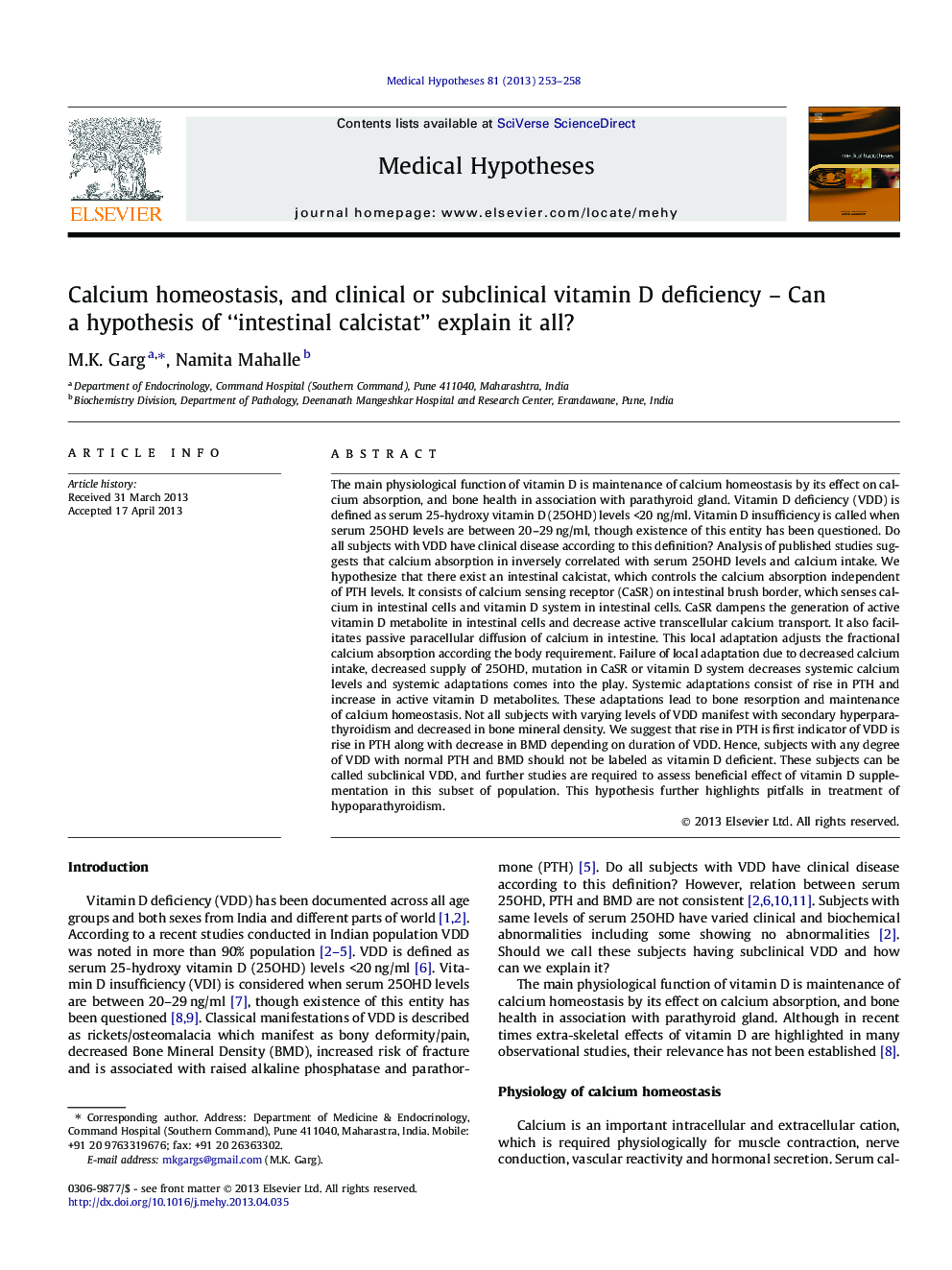| کد مقاله | کد نشریه | سال انتشار | مقاله انگلیسی | نسخه تمام متن |
|---|---|---|---|---|
| 2489104 | 1115015 | 2013 | 6 صفحه PDF | دانلود رایگان |

The main physiological function of vitamin D is maintenance of calcium homeostasis by its effect on calcium absorption, and bone health in association with parathyroid gland. Vitamin D deficiency (VDD) is defined as serum 25-hydroxy vitamin D (25OHD) levels <20 ng/ml. Vitamin D insufficiency is called when serum 25OHD levels are between 20–29 ng/ml, though existence of this entity has been questioned. Do all subjects with VDD have clinical disease according to this definition? Analysis of published studies suggests that calcium absorption in inversely correlated with serum 25OHD levels and calcium intake. We hypothesize that there exist an intestinal calcistat, which controls the calcium absorption independent of PTH levels. It consists of calcium sensing receptor (CaSR) on intestinal brush border, which senses calcium in intestinal cells and vitamin D system in intestinal cells. CaSR dampens the generation of active vitamin D metabolite in intestinal cells and decrease active transcellular calcium transport. It also facilitates passive paracellular diffusion of calcium in intestine. This local adaptation adjusts the fractional calcium absorption according the body requirement. Failure of local adaptation due to decreased calcium intake, decreased supply of 25OHD, mutation in CaSR or vitamin D system decreases systemic calcium levels and systemic adaptations comes into the play. Systemic adaptations consist of rise in PTH and increase in active vitamin D metabolites. These adaptations lead to bone resorption and maintenance of calcium homeostasis. Not all subjects with varying levels of VDD manifest with secondary hyperparathyroidism and decreased in bone mineral density. We suggest that rise in PTH is first indicator of VDD is rise in PTH along with decrease in BMD depending on duration of VDD. Hence, subjects with any degree of VDD with normal PTH and BMD should not be labeled as vitamin D deficient. These subjects can be called subclinical VDD, and further studies are required to assess beneficial effect of vitamin D supplementation in this subset of population. This hypothesis further highlights pitfalls in treatment of hypoparathyroidism.
Journal: Medical Hypotheses - Volume 81, Issue 2, August 2013, Pages 253–258